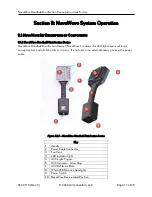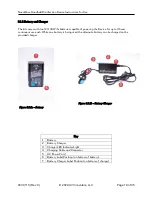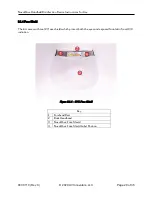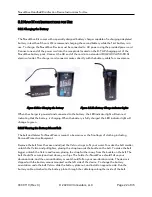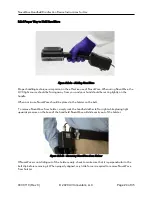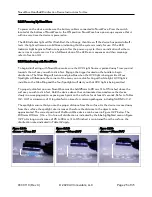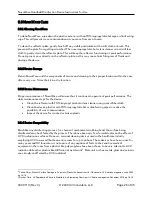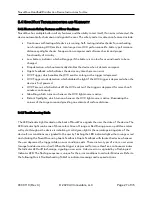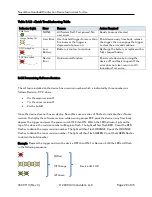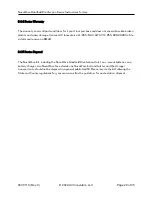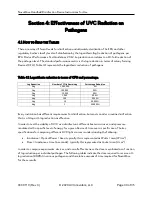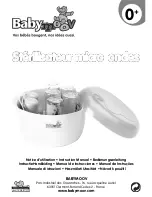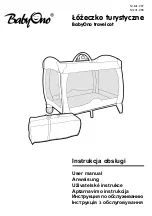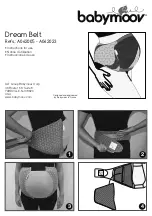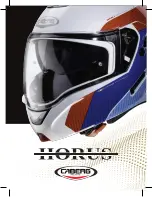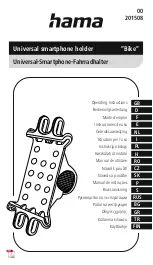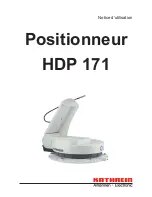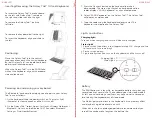
NuvaWave Handheld Disinfection Device Instructions for Use
037-0110 (Rev C)
© 2020 UV Innovators, LLC
Page 15 of 35
Figure 2.1b Ultraviolet wavelength subdivided spectral ranges
.
The UV spectrum is subdivided into 4 different ranges and they each have different features or uses:
•
UVA: (315
–
400 nm, long wavelength) is used in tanning beds, curing applications, and black
lights for forensics.
•
UVB: (280
–
315 nm, medium wavelength) is used in phototherapy/psoriasis applications; this
is the wavelength that causes sun burn and skin cancers.
•
UVC: (200
–
280 nm, short wavelength) is very effective for pathogen disinfection of
surfaces, water, or air.
•
VUV: (100
–
200 nm, vacuum UV) is used to produce ozone plasmas.
2.2
E
FFECTS OF
UVC
R
ADIATION ON
H
UMANS
The sun generates light that covers the entire electromagnetic spectrum. The
Earth’s atmosphere is
blocking a significant portion of that spectrum from reaching the surface. UVC is blocked by our upper
atmosphere and only UVB, UVA are visible, and infrared light are able to penetrate and interact with
humans. The protective layer of the atmosphere saves humans from detrimental exposure to UVC
energy. Human cells interact with photonic energy in many different ways. For instance, near-UVA
and visible light is absorbed by chromophores in cells and the transfer of energy stimulates
independent cellular mechanisms. Most of those mechanisms are beneficial to the human body, since
secondary effects of the photon absorption cause chain reactions in the cells that are protective and
healthy.
1
As an example, the absorption of UVB into the skin is responsible for the formation of vitamin
1
Glickman, Gena, et al., Light therapy for seasonal affective disorder with blue narrow-band light emitting diodes, Biological
Psychiatry; 59, 502-507, 2006.

















